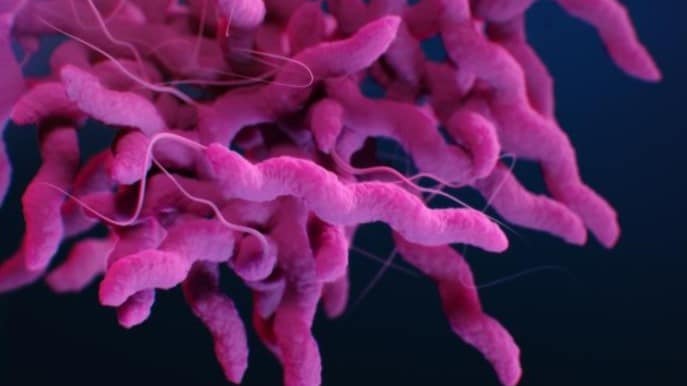Key points
- NARMS assists in outbreak investigations by testing bacteria from sick people, animals, and retail meats for antimicrobial resistance.
- This glossary defines some key terms related to antimicrobial resistance that CDC uses to describe multistate outbreak investigations.

A
Antibiotic
A drug that kills or stops the
growth of bacteria. Antibiotics are a type of antimicrobial. Penicillin and
ciprofloxacin are examples of antibiotics.
Antibiotic resistance
Antimicrobial resistance of bacteria
Antimicrobial
A substance that kills or stops the growth of microbes, including
bacteria, fungi, or viruses. Antimicrobial agents are grouped according to the
microbes they act against (antibiotics [bacteria], antifungals [fungi], and
antivirals [viruses]). Also referred to as drugs.
Antimicrobial resistance
The ability of a microbe (germ) to
resist the effects of a drug. Antimicrobial-resistant germs are not killed by
the drugs that are typically used against them and may continue to multiply.
Antimicrobial resistance includes antibacterial, antifungal, and antiviral
resistance. Learn more about antimicrobial resistance.
Antimicrobial susceptibility testing (AST)
Laboratory
testing performed on microbes to find out if they are susceptible or resistant
to one or more drugs. Results of antimicrobial susceptibility testing show if
bacteria are susceptible (can be treated with the drug), intermediate (may be
treatable with the drug, but may require adjusted dosage), or resistant (cannot
be treated with drug). AST is also referred to as antibiotic susceptibility
testing when tests are being performed on bacteria.
B
Bacteria
Single-celled organisms that
live in and around us with a distinct structure from other microbes. Bacteria
can be helpful, but can also cause illnesses such as diarrhea, strep throat,
ear infections, and pneumonia.
D
Drug class
Antibiotics are categorized
into classes of drugs. Each class is defined by the way it kills or stops the
growth of bacteria. NARMS uses the Clinical & Laboratory Standards
Institute’s drug classes to categorize antibiotics.
G
Genes
Genes, which are made up of DNA,
are the basic units that define the characteristics of every organism. Genes
carry information that determine traits, such as eye color in humans and
antimicrobial resistance in bacteria.
Genome
An organism’s
complete set of genes that carry the genetic instructions for building and
maintaining that organism
M
Microbes
Living organisms, like bacteria,
fungi, or viruses, which can cause infections or disease. Also referred to as
germs.
Multidrug-resistant (MDR) isolate
CDC typically uses this term to refer to an isolate that is
resistant to at least one antibiotic in three or more drug classes.
N
Non-susceptible isolate
An isolate that is either
resistant or not completely susceptible to one or more antibiotics
P
Panel
A set of antibiotics used to determine if an isolate is
resistant to antibiotics and, if so, which ones. The set of antibiotics used
differs by type of bacteria being tested.
Predicted resistance pattern
The antimicrobial resistance
expected based on analysis of an organism’s genome. This analysis identifies
resistance genes and mutations.
R
Resistant isolate
An isolate that is resistant
to one or more antibiotics
Resistance determinant
A catch-all term that includes both resistance genes and
resistance mutations that give a microbe the ability to resist the effects of
one or more drugs
Resistance gene
A gene that gives microbes
the ability to resist the effects of one or more drugs. The gene may be
naturally present in the microbe, or it may be transferred from other microbes.
Resistance mutation
A change in the normal
genetic code that gives a microbe the ability to resist the effects of one or
more drugs
Resistance pattern
A description of the antibiotic resistance testing results for an
isolate
Resistance profile
A description of the resistance patterns for all isolates in an investigation.
A resistance profile differs from a resistance pattern, which refers to the
characteristics of a single isolate
S
Specimen
A sample collected for laboratory
testing. During outbreak investigations, samples may be collected from the
blood, stool, or another location of a human or animal, and from food and the
environment.
Susceptible isolate
An isolate that is not resistant
to any of the antibiotics tested
W
Whole genome sequencing
A
technology that determines the genetic code (genome) of an organism (for
example, people, bacteria, and viruses). Learn more about whole genome sequencing.
